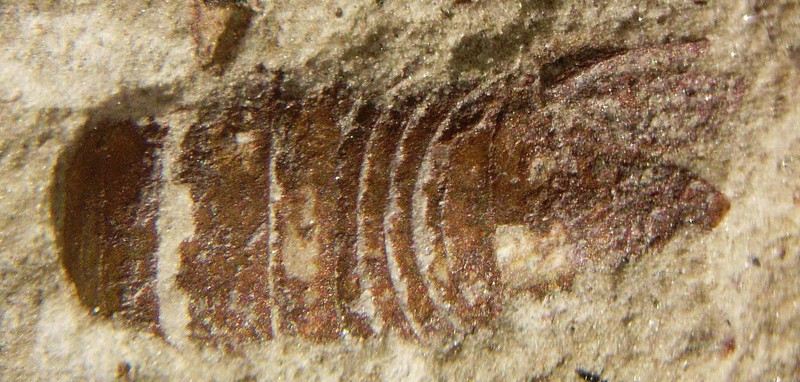|
The peracaridans are marsupial crustaceans occurring with abundant insect remains in late Mesozoic, non-marine sediments of Eurasia. They are less common than other crustaceans like ostracods (seed shrimps) and spinicaudatans (clam shrimps) and, as their common name indicates, possess a brood pouch.
Recently, Visiting Professor Edmund Jarzembowski, together with Professor ZHANG Haichun team from the Nanjing Institute of Geology and Palaeontology, Chinese Academy of Sciences have formally described the first record of this group from contemporary paralic deposits in southeast England; also, they considered the wider implications of the invasion of non-marine waters by these unusual and diverse crustaceans.
The English finds includeCymothoidana websteri, a new genus (collective group) and species ofCirolana-like cymothoidan isopod, the first formally described malacostracan crustacean from the well-known Wealden Supergroup. The new taxon is represented mainly by the posterior body parts consistent with the biphasic moulting of these crustaceans in which the hindbodies are shed first and more likely to be preserved. It also shows some unusual cuticle preservation from that of associated insects and other crustaceans including an unnamed spinicaudatan. The isopod cuticle is iron rich at the type locality in contrast to the carbonaceous cuticle of fossil insects and phosphatic carapace of the clam shrimps. This taphonomic difference will aid future searches for new species such as fossil sandhoppers.
This research was gratefully supported by the Chinese Academy of Sciences Visiting Professorship for Senior International Scientists, the National Basic Research Program of China, the National Natural Science Foundation of China, and a Research Fellowship from the Alexander von Humboldt Foundation.
The paper was published in theProceedings of the Geologists’ Association(Jarzembowski E.A., Wang Bo, Fang Yan, Zhang Haichun (2014) A new aquatic crustacean (Isopoda: Cymothoida) from the early Cretaceous of southern England and comparison with the Chinese and Iberian biotas.Proceedings of the Geologists' Association, 125: 446–451.)

(Information Source: Nanging Institute of Geology and paleontology, CAS) | 
